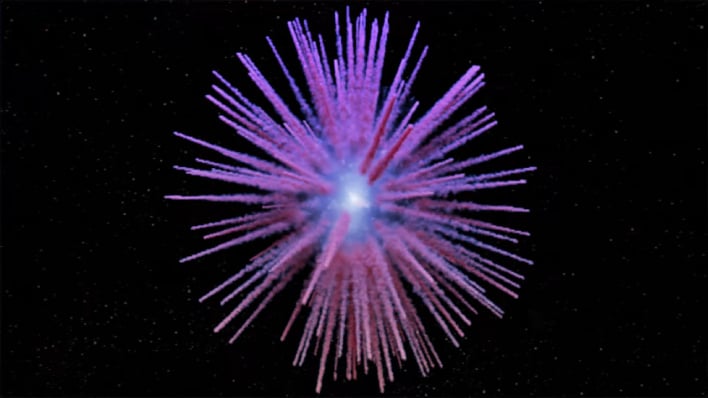
A supernova event recorded by Chinese and Japanese astronomers in 1181 is at the heart of a first-of-its-kind 3D animated map, unveiling new secrets of a flowering “zombie star.” Supernova Sn 1181 is one of the few to be documented before the invention of telescopes.
The zombie star in question was first discovered in 2013, but it was not until 2021 when an astrophysicist from the University of Manchester in England made the connection to SN 1181. The researchers remarked in that study the analysis strongly suggests SN 1181 belongs to a rare class of supernova, called Type Iax. With this type of supernova, the resulting thermonuclear flare-up may be the result of of not one, but two white dwarfs which have violently collided, but have not yet detonated completely, leaving behind a “zombie star.”
Observations by amateur astronomer Dana Patchick of the supernova also revealed a nebula at the site the supernova occurred. Further analysis of the observations later convinced astronomers that the nebula, known as Pa 30, was leftover ejected material from the 1181 supernova. In 2023, another group of astronomers discovered “strange filaments” within the supernova remnant, resembling a dandelion flower.
Now, astronomers have for the first time mapped the location of the peculiar filaments in three dimensions in addition to the speed at which they are streaming outward from the site of the blast.
“A standard image of the supernova remnant would be like a static photo of a fireworks display,” remarked Caltech professor of physics Christopher Martin, who led the team that built KCWI. “KCWI gives us something more like a ‘movie’ since we can measure the motion of the explosion’s embers as they streak outward from the central explosion.”
In order to study the three-dimensional structure of the supernova remnant deeper, the astronomers used the Keck Cosmic Web Imager (KCWI) at the W.M. Keck Observatory in Hawaii. KCWI is an instrument that can capture multi-wavelength, or spectral, information for every pixel in an image. According to Caltech, which built the instrument, it is like “breaking apart the light captured in every pixel into a rainbow of colors.”
Spectral information collected enabled the team to measure the motions of the filaments originating from the center of the explosion and allowed them to create a 3D map of the structure. The filament material shooting out toward Earth shifted the blue higher-energy portion end of the visible spectrum (blue-shifted), while light from material moving away shifted toward the red end of the spectrum (red-shifted). The results also showed the filament material in the supernova is shooting outward from the site of the explosion at approximately 1,000 kilometers per second.
The astronomers noted the material ejected in the 1181 supernova explosion make up the Pa 30 nebula observed today. While they say they know the filaments were generated from the supernova, they are not sure about how they formed.
“A reverse shock wave may be condensing surrounding dust into filaments, but we don’t know yet,” explained Tim Cunningham, a NASA Hubble Fellow at the Center for Astrophysics. “The morphology of this object is very strange and fascinating.”